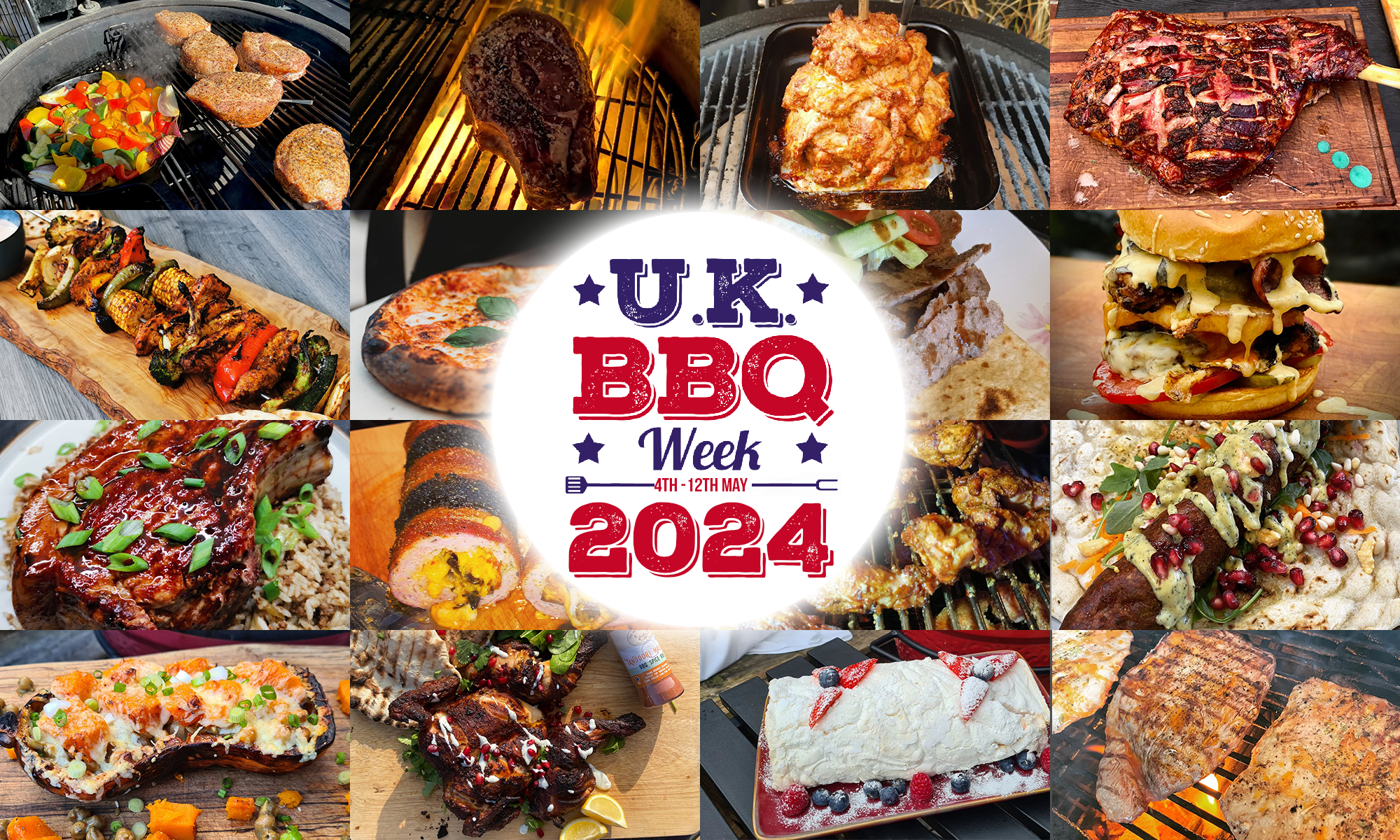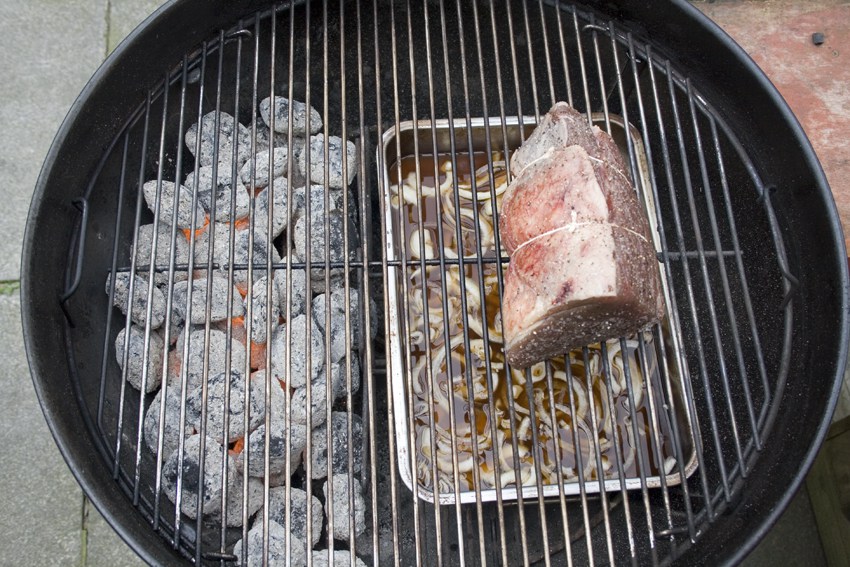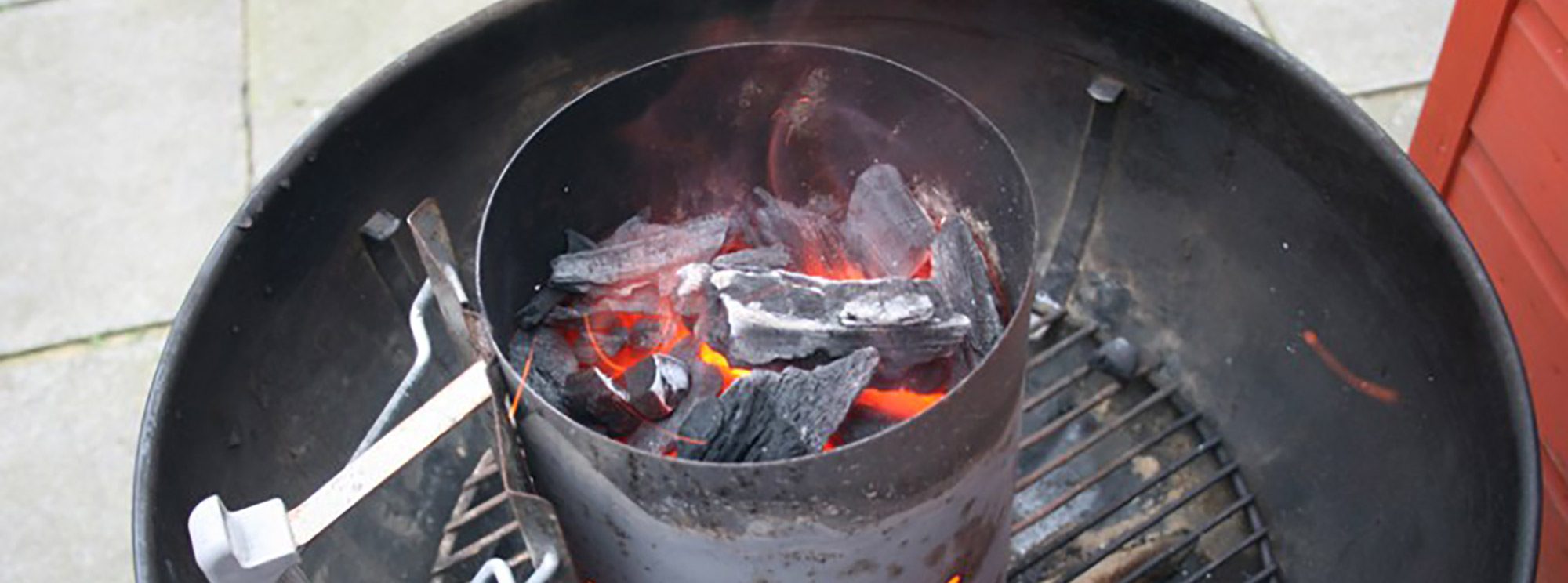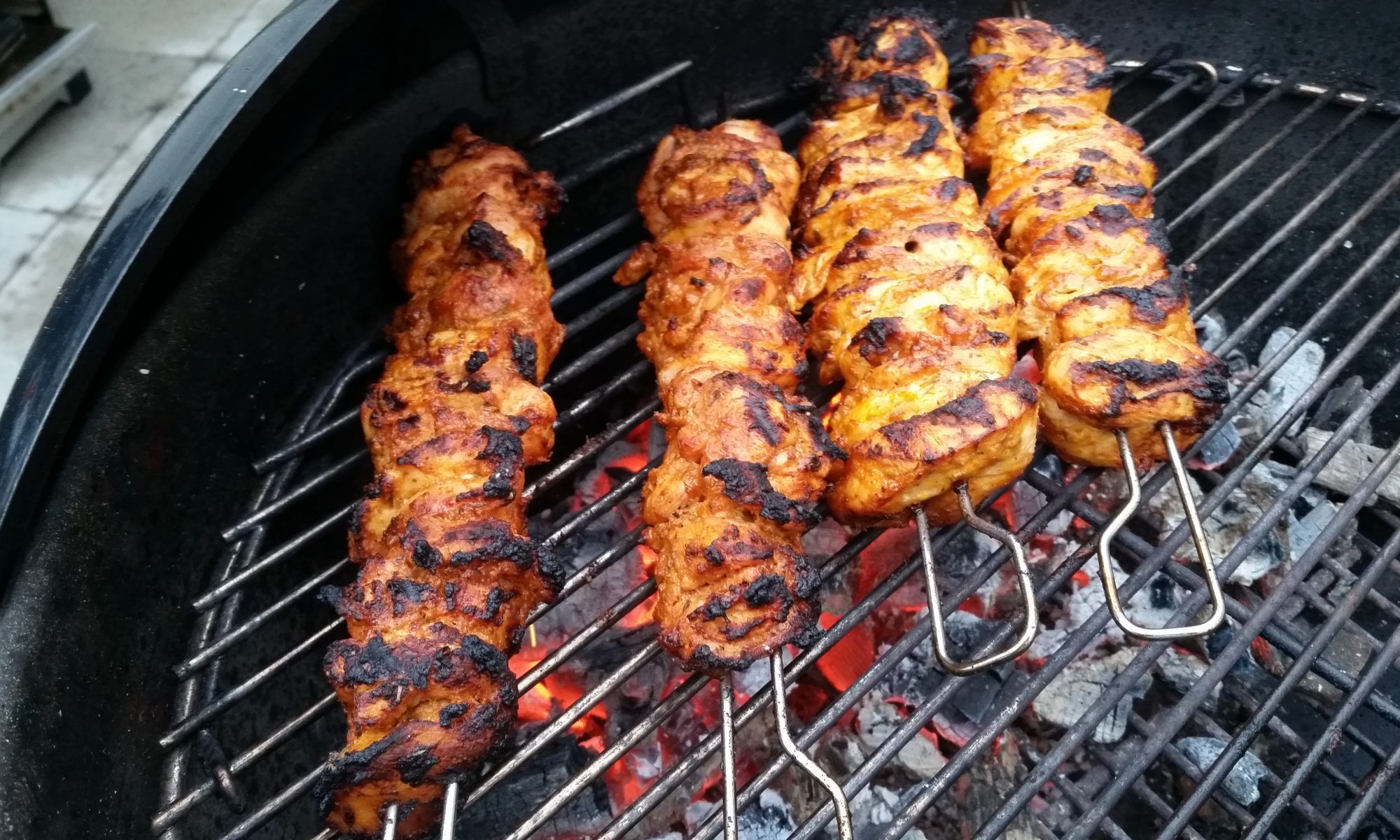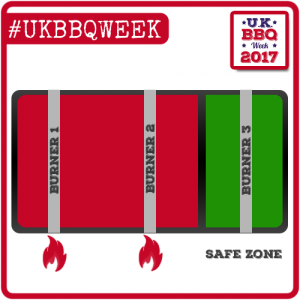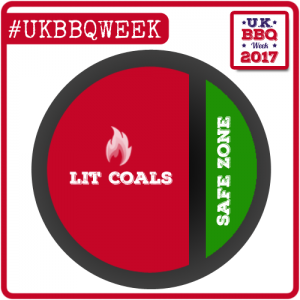Unlike direct cooking, you do not cook your food over the heat source. Instead your food is placed opposite the heat source and with the lid down, it will cook indirectly in the ambient heat within your BBQ.
You can cook using the indirect method on both gas and charcoal BBQ’s and most of the setups are the same with charcoal having a few extra. Each one of the methods below has it’s own advantages and disadvantages and which one you use will depend on what you are cooking.
50/50 Method

One of the most common indirect cooking methods is the 50/50 Method. On your charcoal BBQ, you would cover half of your charcoal grate with coals then place your food on the cooking grate above the area without coals. With the lid on, the ambient temperature will rise and cook your food in a similar way to your oven, but much tastier!
This would also be your method of choice for cooking indirect on a 2 burner gas BBQ. You would light the left hand burner and place your food on the right hand side of the cooking grate.The only disadvantage to this setup is that the heat source is only coming from one side of the meat. If you are roasting a chicken for example, you would need to turn it halfway through to help it cook evenly.
This is a two zone cooking setup so you have an area of direct and indirect heat making it great for searing a large piece of meat then moving it to the indirect side to finish cooking.
50/50 Split Method

Similar to the first method, you will have half your charcoal grate with no charcoal but this time, instead of placing all your coals to one side of the charcoal grate, you split them to the left and right leaving an area of indirect heat in the centre of the cooking grate where you place your food.
On a 3 burner gas BBQ you would light the left and right burners, leaving the middle one off, and place your food directly over the middle burner.
You will not have to rotate your food using this method as the heat source is coming from either side of the meat, helping it cook more evenly.
Whilst it is not essential, using charcoal baskets or charcoal rails to hold the coals in place will stop them from falling into the indirect area.
Once again, you will have an area of direct heat for searing.
Ring of Fire Method

This method is solely for charcoal BBQ’s, unless you fancy bending your burners into shape, and it involves placing your coals around the entire outside edge of the charcoal grate leaving the middle empty.
Your food would then be placed in the centre of the cooking grate giving you an even heat distribution around the entire BBQ. This method is great for roasting large, single cuts of meat such as a whole Chicken or Beef roast.
It isn’t an effective two zone cooking method as your area of direct heat around the outside of the BBQ is quite small so if you are planning to sear your meat before or after roasting, one of the other methods might work best.
The Bullseye Method
The bullseye method is the mirror opposite to the ring of fire, with your charcoal placed in the centre of the charcoal grate leaving the outer ring empty. This means your area of indirect heat is around the outer edges of the cooking grate.
This cooking method is better suited to lots of smaller cuts of meat and is traditionally used for things like Chicken wings. With the coals all in the middle of the grill, you have an area where you can sear over direct heat then move your food to the outside to cook indirect.
Using something like charcoal baskets or charcoal rails to hold your fuel in place makers it easier to avoid the charcoal falling to the outer edges and you can keep the charcoal concentrated in the centre of the grill.
There is no single best cooking setup on your BBQ. Each one of these methods has it’s advantages for different cooks so try them all and learn what works best for each recipe you cook.
Sign up for our FREE Newsletter
Keep up to date with all the latest news on UK BBQ Week by entering your name and email address below. We will send you our latest recipes, helpful articles and details on our latest competitions.
